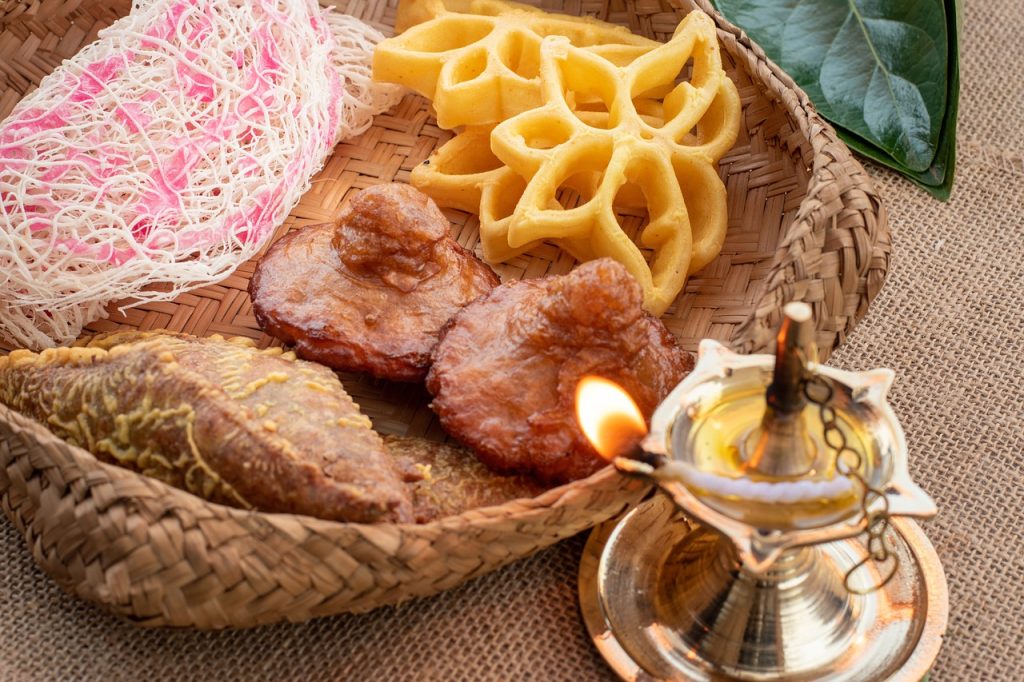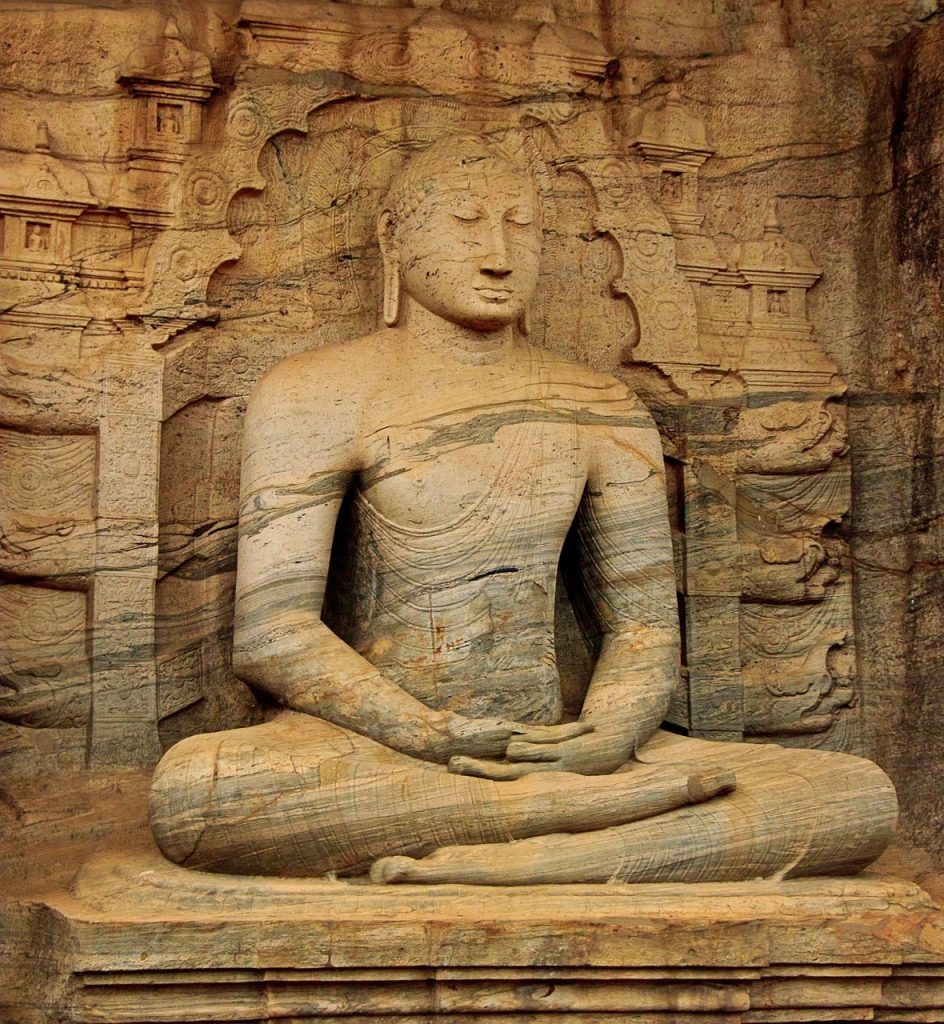
Have you ever dreamed of immersing yourself in a vibrant tapestry of colors, sounds, and flavors? Look no further than the enchanting island of Sri Lanka, where centuries-old traditions and captivating festivals come to life in a spectacular display of cultural richness.
From the rhythmic beat of traditional drums to the mesmerizing scent of incense wafting through ancient temples, Sri Lanka’s cultural heritage is a feast for the senses. But in today’s fast-paced world, many worry that these precious traditions are at risk of fading away. How can we preserve the magic of Sri Lankan customs for future generations?
Join us on a journey through the heart of Sri Lankan culture as we explore the major festivals, religious customs, artistic performances, and culinary delights that make this island nation truly unique. We’ll delve into the significance of traditional ceremonies, uncover the secrets of time-honored rites of passage, and discover how Sri Lankans are working to safeguard their invaluable heritage. Get ready to be inspired by the rich tapestry of Sri Lankan festivals and traditions!
Major Sri Lankan Festivals
Sri Lanka’s rich cultural tapestry is woven with vibrant festivals that showcase the island’s diverse heritage. Let’s explore some of the most significant celebrations that bring the nation together in joyous harmony.
A. Exploring the vibrant Sinhala and Tamil New Year
The Sinhala and Tamil New Year, locally known as Aluth Avurudda, is a grand celebration marking the end of the harvest season. This festival typically falls in mid-April and is observed by both Sinhalese and Tamil communities.
Key elements of the New Year celebration:
- Traditional rituals and customs
- Family gatherings and feasts
- Cultural games and activities
- Exchange of gifts and sweets
B. Esala Perahera: A grand procession honoring the Sacred Tooth Relic
The Esala Perahera, held in Kandy, is one of Sri Lanka’s most spectacular festivals. This ten-day pageant showcases the country’s rich Buddhist heritage and cultural diversity.
| Feature | Description |
| Main attraction | Procession of the Sacred Tooth Relic |
| Participants | Elephants, dancers, drummers, fire-breathers |
| Duration | 10 nights |
| Best time to visit | July/August |
C. Poson: Commemorating the arrival of Buddhism in Sri Lanka
Poson, celebrated in June, marks the introduction of Buddhism to Sri Lanka by Arahat Mahinda. The festival is characterized by:
- Pilgrimage to Mihintale, the birthplace of Sri Lankan Buddhism
- Lighting of lanterns and pandals (decorative structures)
- Observance of sil (Buddhist precepts)
- Almsgiving and charitable activities
D. Vesak: Celebrating the birth, enlightenment, and death of Buddha
Vesak, also known as Buddha Purnima, is one of the most important Buddhist festivals in Sri Lanka. This celebration in May honors three significant events in Buddha’s life:
- Birth
- Enlightenment
- Passing away (Parinirvana)
Vesak festivities include:
- Illumination of homes and streets with colorful lanterns
- Construction of elaborate pandals depicting Buddhist stories
- Offering of food and drinks to passersby at dansal (alms-giving stalls)
- Observance of religious rituals at temples
These major festivals not only showcase Sri Lanka’s rich cultural heritage but also foster unity among its diverse communities. As we delve deeper into Sri Lankan traditions, let’s explore the religious customs that form the backbone of these celebrations.
Religious Traditions and Customs

Sri Lanka’s rich tapestry of religious diversity is reflected in its various traditions and customs. Each faith has its unique practices, which have been beautifully integrated into the island’s cultural landscape.
A. Christian customs and their unique Sri Lankan adaptations
Christianity in Sri Lanka has developed its own distinctive flavor, blending Western traditions with local customs. For instance, during Christmas:
- Churches are decorated with coconut leaves and local flowers
- Traditional Sri Lankan sweets like ‘kavum’ and ‘kokis’ are prepared alongside Western Christmas cakes
- Nativity scenes often feature local animals and scenery
| Christian Festival | Sri Lankan Adaptation |
| Christmas | Incorporation of local decorations and food |
| Easter | Palm fronds used instead of palm branches |
| Weddings | Traditional attire mixed with Western wedding gowns |
B. Muslim traditions and their integration into Sri Lankan society
Muslim traditions in Sri Lanka have seamlessly integrated into the broader cultural fabric:
- Mosques feature unique architectural styles blending Middle Eastern and local designs
- Ramadan is celebrated with communal ‘iftar’ gatherings that often include non-Muslim neighbors
- Eid-ul-Fitr celebrations involve sharing traditional sweets with the entire community
C. Hindu rituals and ceremonies in Sri Lankan culture
Hindu practices in Sri Lanka have their own distinct characteristics:
- Temple festivals (thiruvizha) are grand affairs involving the entire community
- The Thai Pongal harvest festival is celebrated with great enthusiasm
- Kavadi dancers during Thaipusam showcase intricate body piercings as a form of devotion
D. Buddhist practices and their influence on daily life
Buddhism plays a central role in Sri Lankan society, influencing daily life in numerous ways:
- Poya days (full moon holidays) are observed monthly with religious activities
- Many homes and businesses have small shrines for daily worship
- The practice of dana (giving) is widespread, with people often offering food to monks and the less fortunate
Buddhist influence extends to various aspects of life:
| Aspect | Buddhist Influence |
| Education | Temple schools (Pirivenas) |
| Art | Intricate temple paintings and sculptures |
| Architecture | Stupas and dagobas dotting the landscape |
Now that we’ve explored the diverse religious traditions in Sri Lanka, let’s delve into the vibrant world of cultural performances and arts that further enrich the island’s heritage.
Cultural Performances and Arts
Now that we’ve explored the religious traditions of Sri Lanka, let’s delve into the vibrant world of cultural performances and arts that make this island nation truly unique.
Folk Theater and Storytelling Traditions
Sri Lanka boasts a rich tradition of folk theater and storytelling, passed down through generations. One of the most notable forms is:
- Kolam: A masked dance-drama that combines humor, social commentary, and mythological tales
- Sokari: A folk drama that often depicts rural life and social issues
- Nadagam: A form of outdoor theater that blends singing, dancing, and dialogue
These performances not only entertain but also serve as a means of preserving cultural heritage and transmitting moral values.
Craftsmanship in Mask-Making and Puppetry
The art of mask-making and puppetry plays a crucial role in Sri Lankan cultural expression. Here’s a comparison of these two art forms:
| Aspect | Mask-Making | Puppetry |
| Materials | Wood, paint, natural fibers | Wood, cloth, string |
| Usage | Kolam performances, rituals | Shadow plays, storytelling |
| Symbolism | Represents deities, demons | Depicts characters, animals |
| Techniques | Carving, painting | Carving, jointing, manipulation |
Both these art forms require immense skill and are often passed down within families or communities.
Traditional Music and Instruments
Sri Lankan traditional music is deeply rooted in the country’s history and culture. Some key elements include:
- Percussion instruments: Geta beraya, dawula, and thammattama
- Wind instruments: Horanewa and flute
- String instruments: Ravanahatha and vinā
These instruments come together in various ensembles to create the unique soundscape of Sri Lankan music, often accompanying dance performances and religious ceremonies.
Kandyan Dance: A Showcase of Sri Lankan Heritage
Kandyan dance, originating from the central hill region of Sri Lanka, is perhaps the most iconic of Sri Lankan cultural performances. This dynamic dance form:
- Features elaborate costumes adorned with metallic ornaments
- Incorporates acrobatic movements and rhythmic footwork
- Is traditionally performed by male dancers
- Often depicts stories from Sri Lankan folklore and Buddhist literature
The Kandyan dance is not just a performance but a living embodiment of Sri Lanka’s cultural heritage, showcasing the nation’s artistic prowess and historical narratives.
As we explore these rich cultural performances and arts, we begin to appreciate the depth and diversity of Sri Lankan traditions. Next, we’ll discover how these artistic expressions are complemented by the island’s equally rich culinary heritage.
Culinary Traditions
Sri Lankan cuisine is a vibrant tapestry of flavors, reflecting the island’s rich cultural heritage and diverse influences. The culinary traditions of Sri Lanka are deeply intertwined with its festivals and cultural practices, making food an integral part of the nation’s identity.
A. Festive Foods and Their Significance
Festive foods play a crucial role in Sri Lankan celebrations, each dish carrying symbolic meaning and cultural significance. Here’s a glimpse of some popular festive dishes and their importance:
| Dish | Festival | Significance |
| Kiribath | New Year, Special occasions | Symbol of prosperity and new beginnings |
| Kavum | New Year, Vesak | Represents sweetness in life |
| Watalappam | Ramadan, Eid | Symbol of unity and sharing |
| Kokis | Christmas, New Year | Represents joy and celebration |
B. Traditional Cooking Methods and Utensils
Sri Lankan cooking techniques have been passed down through generations, preserving the authenticity of flavors. Some traditional methods include:
- Clay pot cooking (mati walata)
- Coconut shell grilling (pollos mässma)
- Stone grinder (miris gala) for spice pastes
- Banana leaf wrapping for steaming
These methods not only impart unique flavors but also connect modern Sri Lankans to their culinary heritage.
C. The Art of Spice Blending in Sri Lankan Cuisine
Spice blending is at the heart of Sri Lankan cooking, creating complex flavor profiles that distinguish the cuisine. Key spices include:
- Cinnamon
- Cardamom
- Cumin
- Coriander
- Curry leaves
The art of balancing these spices is a skill passed down through families, with each household often having its own secret blend.
D. Regional Specialties and Their Cultural Importance
Sri Lanka’s diverse regions each boast unique culinary specialties that reflect local ingredients, cultural influences, and historical significance. For example:
- Jaffna’s crab curry: Represents the northern region’s coastal bounty
- Kandyan kavum: Showcases the central region’s royal heritage
- Southern fish ambul thiyal: Highlights the preservation techniques of coastal communities
These regional dishes not only satisfy the palate but also serve as a delicious way to explore Sri Lanka’s cultural diversity.
Now that we’ve explored the rich culinary traditions of Sri Lanka, let’s delve into the traditional ceremonies and rites of passage that further exemplify the country’s cultural depth.Sri Lanka’s vibrant festivals and rich traditions offer a captivating glimpse into its cultural heart. From the grand pageantry of the Kandy Esala Perahera to the serene Vesak celebrations, each festival reflects the island’s deep-rooted religious harmony and historic customs. These events are more than just rituals; they offer a chance for travelers to immerse themselves in the local way of life, where community, faith, and joy are celebrated with color, music, and food. Experiencing Sri Lankan festivals is not just a visual treat but a soulful journey into a land where ancient traditions blend seamlessly with modernity. For travelers seeking an authentic cultural experience, Sri Lanka promises unforgettable memories, offering a taste of its hospitality and the warmth of its people. Visiting during these festivals provides a unique opportunity to connect with the country’s heritage and spirit in a way that goes beyond ordinary tourism.
